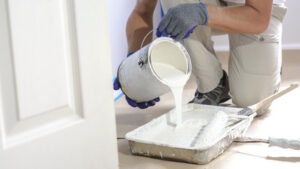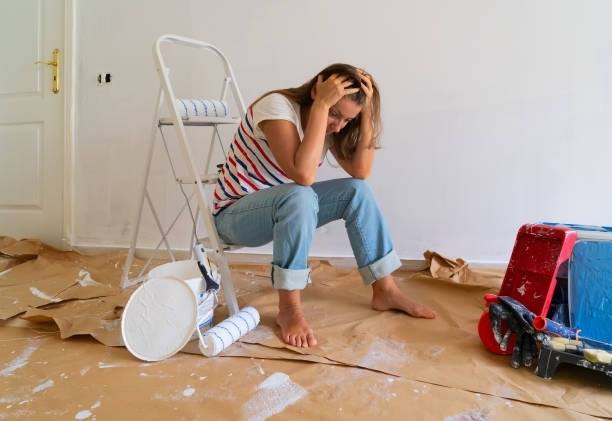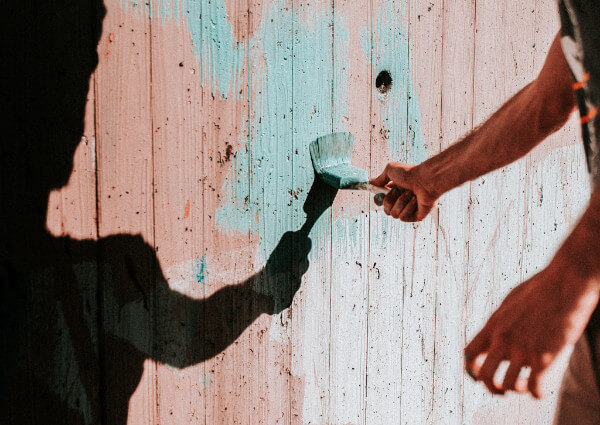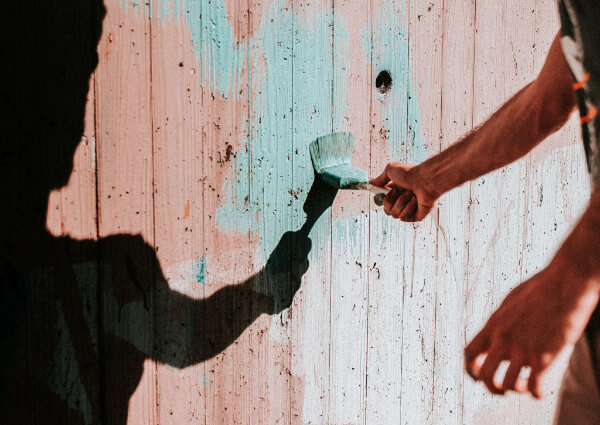Paint Contractors Anchorage Ak are professionals who offer residential and commercial painting services. Their services typically include surface preparation (filling holes, evening out the surfaces, and removing future covers), cleaning and sanding the surfaces, priming the surfaces, and finally, painting two coats of quality paint.

When choosing a paint contractor, get several quotes. Look at each quote’s details and ensure all services are outlined clearly in a contract.
Professional painting contractors are able to offer more than just a paint job. They can provide services that include repairing damaged areas of your home or business, painting and decorating the interior or exterior and providing advice on color options.
Painters that have the experience to know what they’re doing are able to complete your project quickly and efficiently with minimal disruption to your daily routine. This can save you valuable time and money. Additionally, painting professionals can anticipate potential issues and work to prevent them before they occur.
Painting contractors make their living by providing high-quality painting services. They’re trained to understand how the process works and are able to plan ahead, saving you time and money in the long run. Additionally, they’re able to apply the best techniques, which results in a superior end product.
They also have access to specialized equipment and high-quality materials that are not available to the general public, which can make your home or business look its best. This can increase the value of your property and reduce maintenance costs over time.
When hiring a painting contractor, be sure to ask for references from previous clients and examples of their past work. Those who are willing to provide you with this information demonstrate a level of professionalism and reliability that can help you decide whether they’re right for your next project.
Painting companies should be licensed with the Contractors State License Board, which means that they have been vetted by the state and are held to a certain standard of quality, service and ethics. They should also have workers’ compensation and liability insurance, which protects you in the event of an injury or damage on site.
A good painter will be happy to provide you with a written contract that includes the specifics of your project, including the painting products that will be used, the timeline and the cost. This will ensure that both parties are on the same page and there are no misunderstandings.
Bonding is a sign of professionalism because it indicates that the painter is committed to their trade and will uphold industry standards. It can also provide you with a mechanism for dispute resolution should any problems arise, saving you time and money in the long term.
Experience
When choosing a painting contractor, look for someone with experience. They should have a solid track record with lots of glowing customer reviews. They should be licensed and insured in your state or local area, and they should offer a warranty on their work. They should also have the skills and expertise to get your job done quickly and efficiently. They should be able to explain the various types of paint and finishes, and they will know how to prepare surfaces for painting.
If you’re thinking about hiring a new painting contractor, be sure to get multiple quotes. Compare the costs of labor and materials, and make sure to include any special requests you have for your project. Be wary of companies with extremely low prices, as these may be fly-by-night operations that don’t have the resources to provide high-quality work.
Another consideration when selecting a painting contractor is their marketing methods. A good painter will have a strong online presence and a professional website, and they’ll use social media to promote their services. They might also advertise in print and online directories, put their business details on their truck, or wear uniforms with the company logo when working on jobs.
You can also ask your friends, neighbors, co-workers, and church members for referrals when choosing a painting contractor. If they’ve had their home painted recently, they’ll have a first-hand account of the process and can give you an idea of what to expect. Once you’ve found a few potential candidates, check their license and insurance status. Also, be sure to read online reviews and testimonials. These will help you narrow down your choices and find the best contractor for your project. Lastly, make sure to review the written contract carefully before hiring someone for your project. This will prevent any miscommunication or surprise fees down the road.
Local Knowledge
Painting contractors have to be knowledgeable about the materials they use. They need to know about the different types of paints, the surface they are working on and even the cleaners and toxic substances they may encounter. They must also be able to guide their clients through the different options for color choices and styles of painting. They need to be able to take into account the unique needs of each client and deliver results that exceed expectations.
Being a professional paint contractor requires a lot of hard work, but it is a rewarding business. It is a great career choice for those who are willing to put in the time and effort to build a brand, create a customer base and excel at their craft. It is possible to set up a painting company with very little money and earn a decent income, but it will require dedication, creativity and hard work.
When selecting a paint contractor, it is a good idea to ask for referrals from family and friends. Local contractors have a more in-depth understanding of the community and are more likely to be familiar with the local home trends. They will also be aware of the climate conditions in your area and how different paints and finishes hold up over time.
Another way to find a good painting contractor is by checking online reviews. Websites such as Angie’s List and Yelp allow customers to see what others have to say about their experience with a particular contractor or service. Lastly, it is always a good idea to get a contract from the painting company before beginning any work. This will clearly state what services they are providing, how much they charge and when they expect to be finished.
Having a contract will protect both you and the painting contractor in case there is any miscommunication or conflict. It will also specify what is expected of each party, including the timeline and any additional services such as drywall repair or wallpaper removal. Finally, it should include a guarantee that the contractor will leave the home as clean or better than it was when they arrived.
Customer Service
A painter must provide excellent customer service to win repeat business and expand their client base. They must be friendly and understanding, especially since painting is often disruptive to a household. The contractor should also listen to the client and respond to their questions with knowledge and solutions. This will show the customer that they are interested in their needs and want to do a great job.
Painters should also provide a detailed quote to their clients. This should include the project scope, details about paint selection and application, as well as the terms and conditions of payment. This is an important part of the contract and should be reviewed carefully by the client. The contractor should also disclose whether they have employees or subcontractors and their insurance information. Obtaining quotes from several different painting contractors is a good way to compare prices and services.
After a job is completed, the painting contractor should follow up with their customers to get feedback and make sure they are satisfied. This could be as simple as a phone call or email asking if the client was happy with the work and if they would recommend the painting company to others. The contractor can also ask the client to leave a review online.
A new painting contractor can promote their business with social media, flyers, business cards and local advertising. They can also join industry events and trade shows to meet other contractors and other business owners who may be able to refer them to potential clients. Painting businesses can also hire subcontractors to help them with large projects and keep their overhead low.
When selecting a painting contractor, be sure to check their license and insurance coverage. Ensure they have workers’ compensation and liability coverage in case someone is injured on the job. A reputable company will also be willing to provide references from previous clients and be available to answer any questions. It is also a good idea to get quotes from three or more painting companies and look at their customer service records.














